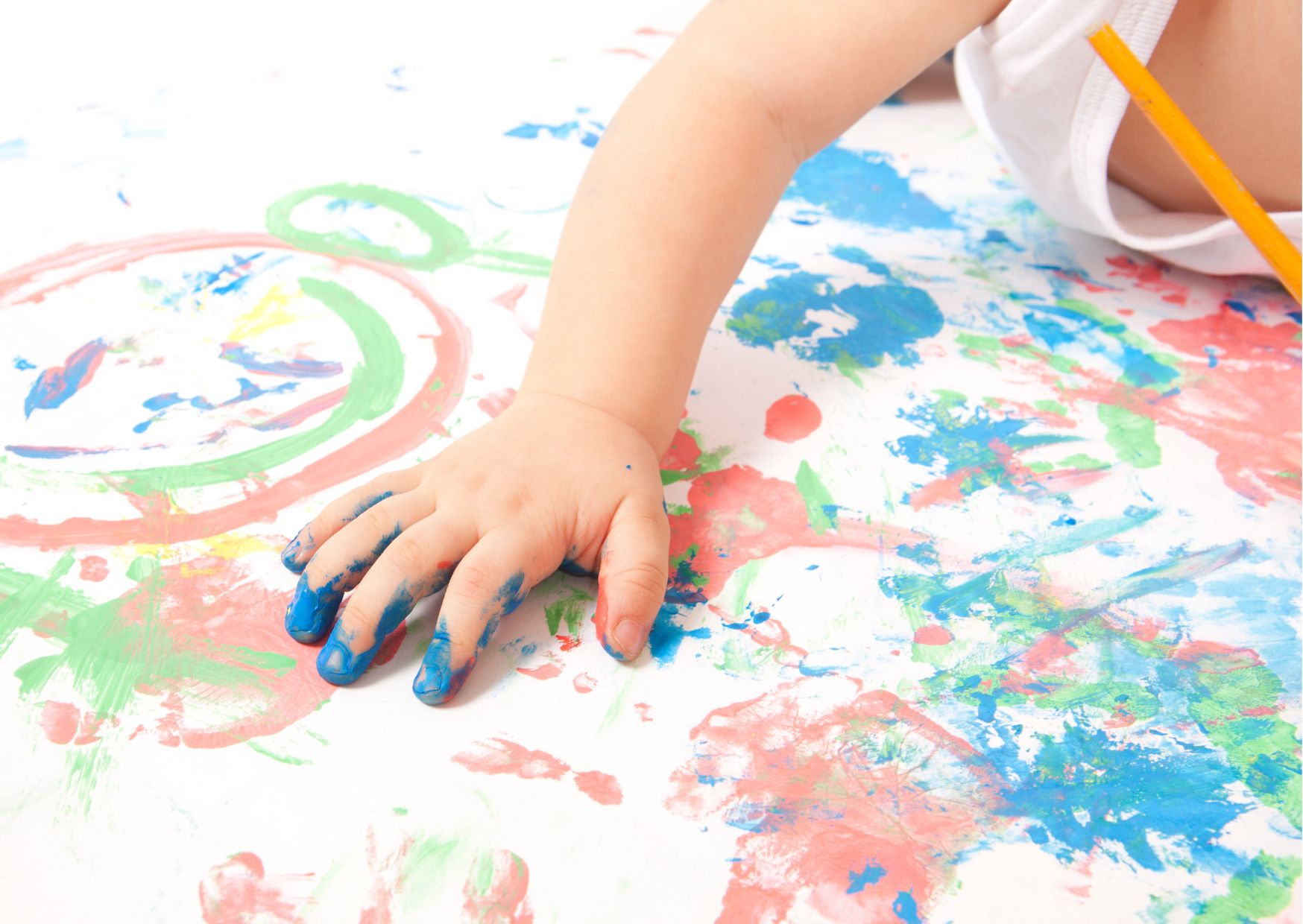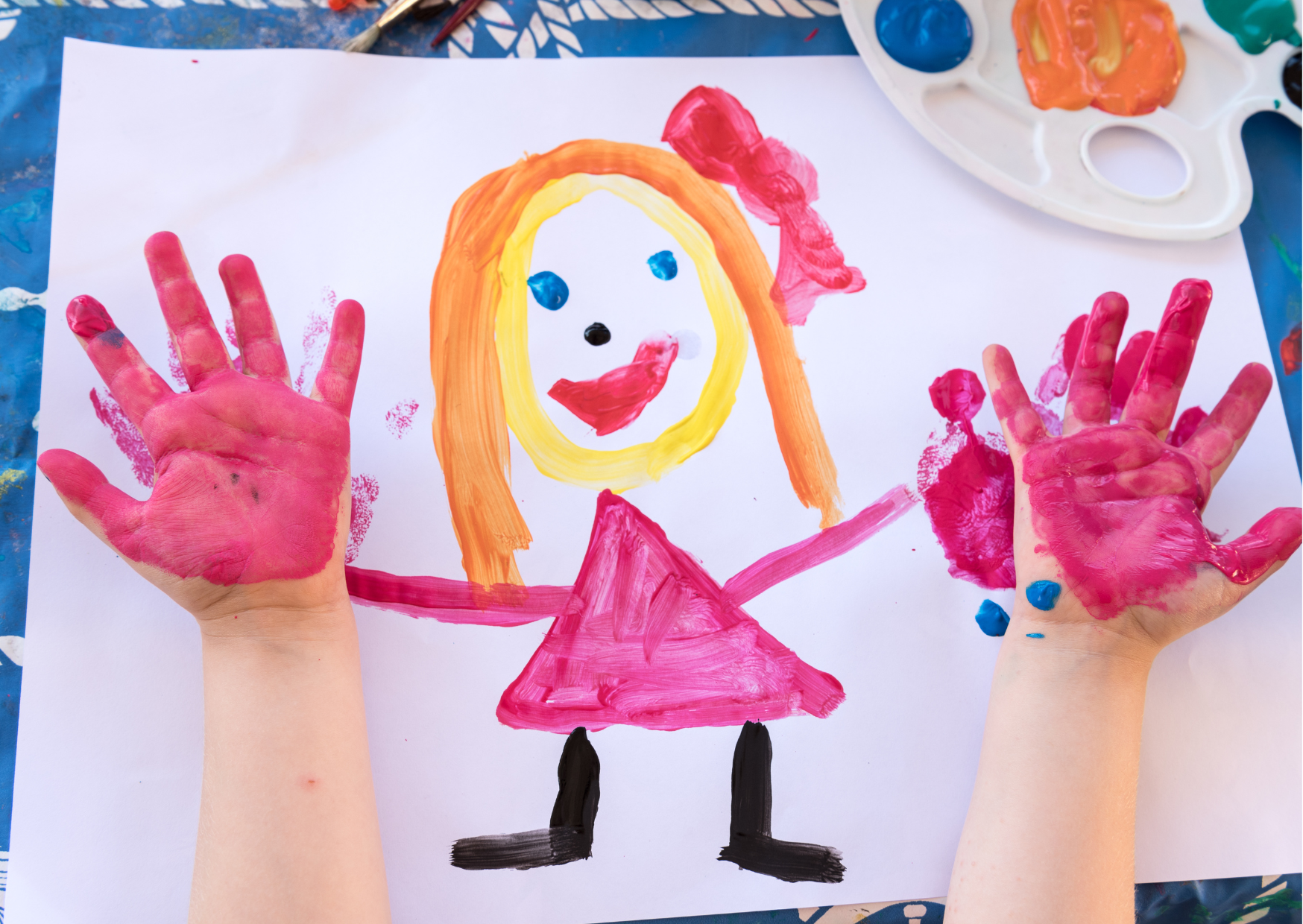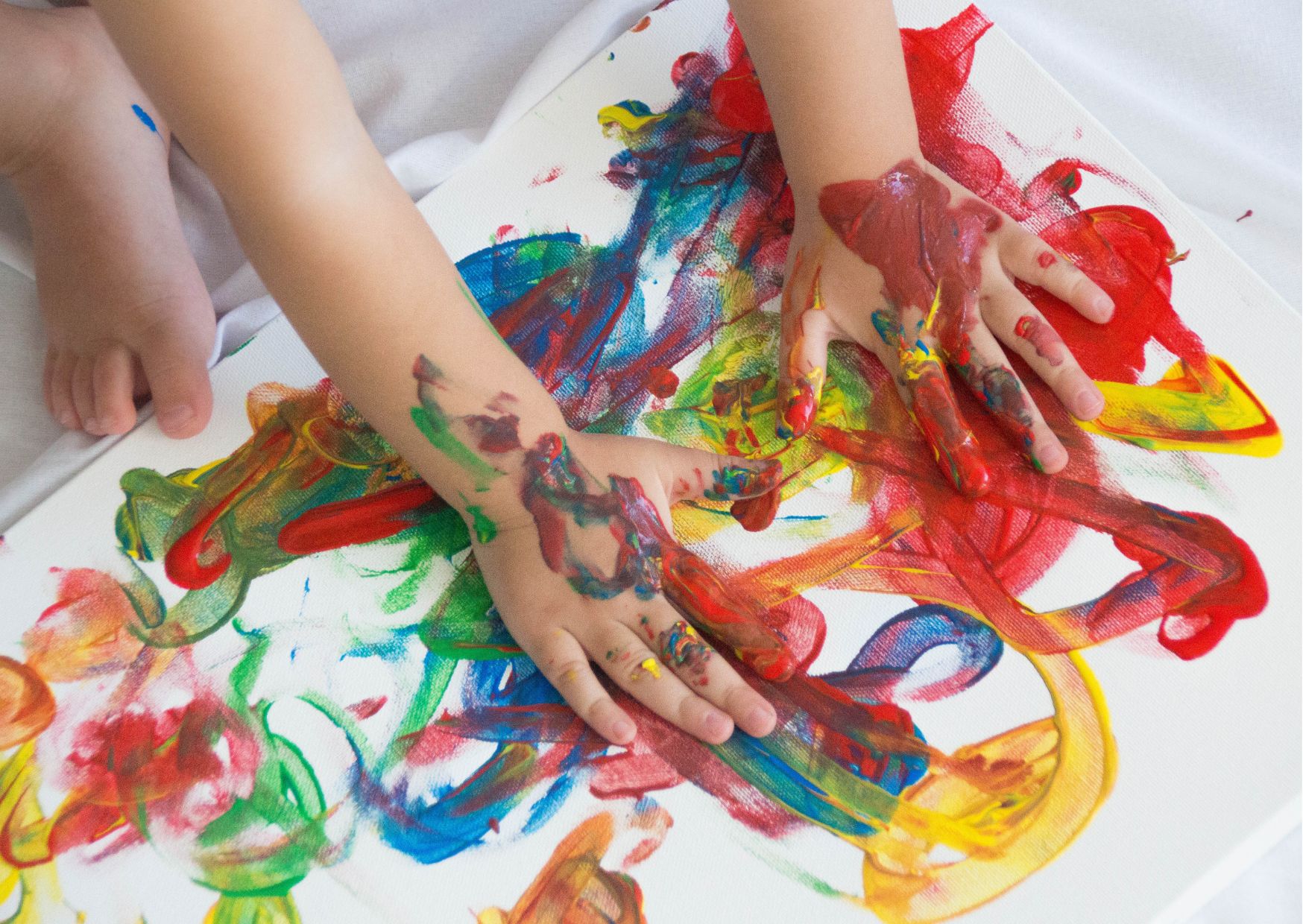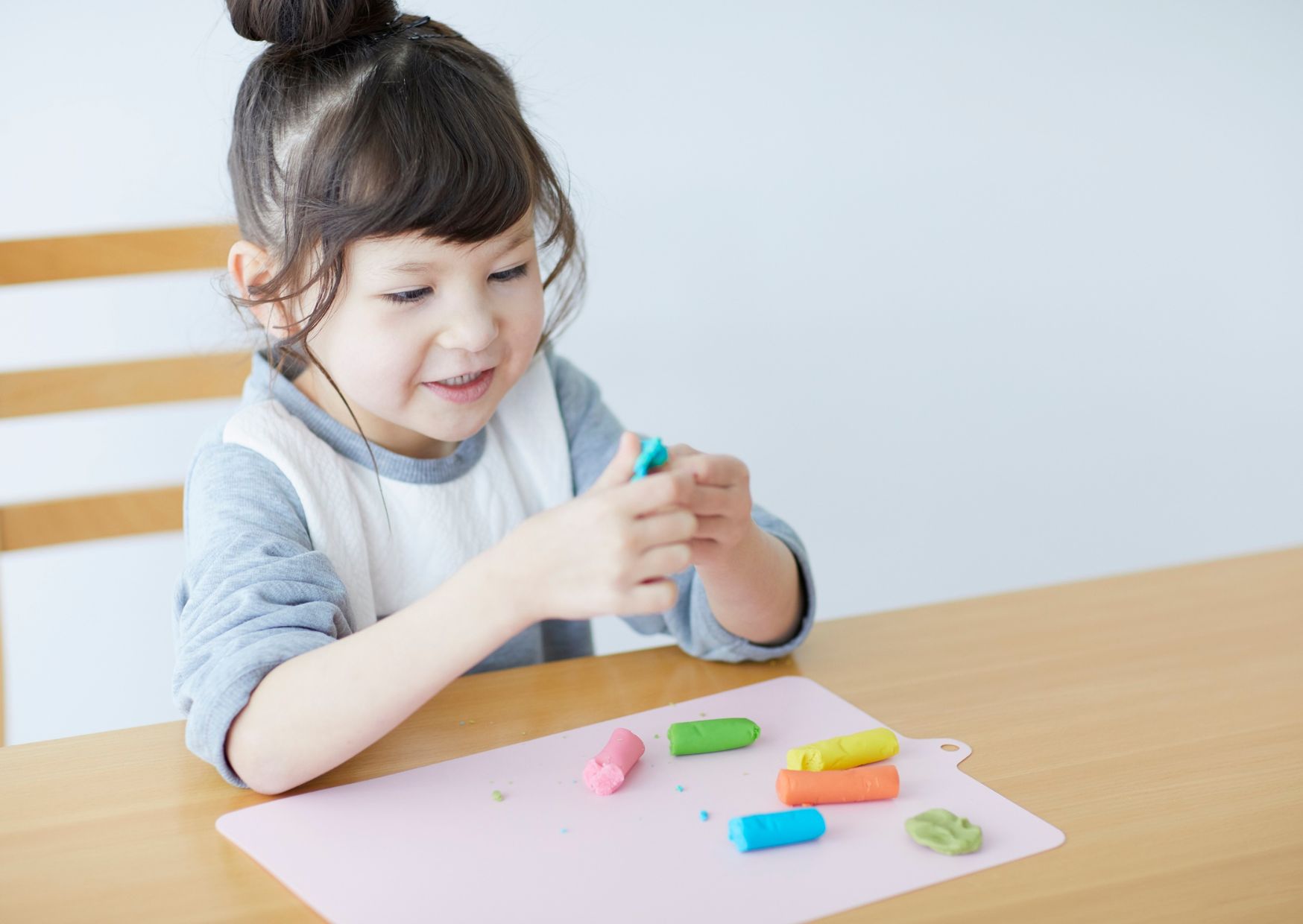

When tamariki begin to create art, they represent their view of the world in a dynamic way.
Drawing, writing, number development and language are intertwined as tamariki make meaning through art.

Early art begins as scribbles and mark-making. Very young tamariki are more interested in the physical and sensory aspects of art rather than the outcome. At this stage their marks do not represent anything, it is purely the enjoyment of making marks. Mark making usually starts with horizontal lines and moves to shorter lines, and circular movements.

As tamariki develop, their marks begin to become more intentional and purposeful. Their markings mean something to them as they make connections to their world, and the people, places, and things within it. Their art is usually expressions of their understandings of the world, not replications of objects within it.

Tamariki begin representing recognizable objects from around 3-4years of age. They usually begin with drawing people, who look a bit like a tadpole, with a circle head and two legs. More body parts are added as their understanding grows. It is at this stage that tamariki learn they can communicate through their drawings. They begin making connections to the shapes they draw and the shapes they see in the physical world around them. As their hand-eye coordination improves, they begin to create more deliberate shapes and curves. At around 4-5years of age, tamariki will begin to tell stories with their drawings and use their pictures to work out problems. Drawings can represent both fiction and non-fiction.

School aged tamariki begin to use symbols to identify physical objects or scenes. They develop more spatial awareness in their pictures, being more mindful of the importance of sizes and shapes. Often larger objects are of more importance.

The environment plays an important role in inspiring art and encouraging tamariki to explore their place in the world. An environment that supports freedom to create, experiment, and explore in a positive, relaxed and unhurried way allows for creativity and free expression to develop.

Kaiako can support and encourage tamariki art development through celebrating the process, rather than just the product, as there is lots of learning happening throughout the process. By being present and listening to what tamariki share will encourage their creative expression and communication skills. Allow tamariki to independently discover, explore, imagine and experiment with materials and resources.

The benefits of art include early literacy skills, development of expressing their thoughts and feelings, creativity and imagination, early mathematics (numerals and shapes, amounts and quantities), and physical development (a range of big and small body movements that support fine and gross motor skills).

Some ideas to support art development: make patterns in wet or dry sand, or mud, using a stick. Paint shapes with fingertips or handprints. Provide a range of equipment in different sizes and shapes, such as large paint brushes and vertical easels, chalkboards and chalk, paper and different types of markers/crayons/pencils. Make marks in gloop, slime or playdough.
